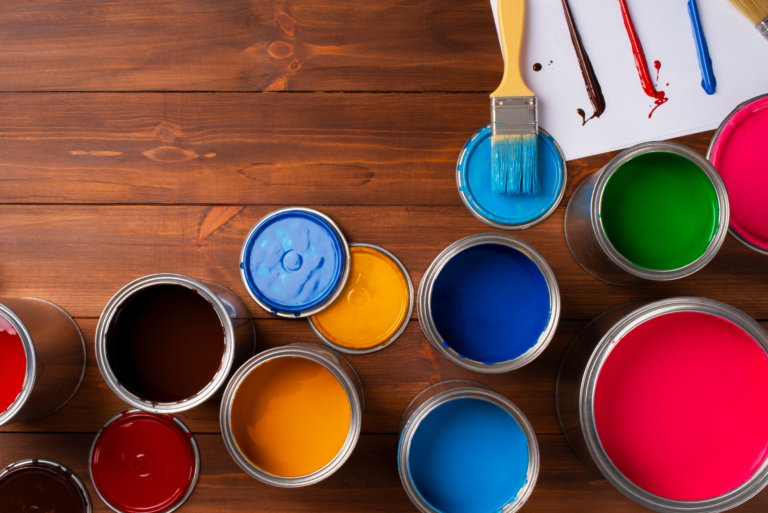Introduction to Rubber Paint
Rubber paint is a versatile and durable coating that provides a flexible, waterproof, and protective layer. Whether you’re looking to protect surfaces from wear and tear or enhance their aesthetic appeal, rubberized paint offers an effective solution.
Benefits of Rubber Paint
Rubber paint stands out for its unique properties. It is known for its durability, flexibility, and resistance to extreme weather conditions. Here are some key benefits:
- Waterproofing: Rubber paint forms a watertight seal, making it ideal for surfaces exposed to moisture.
- Flexibility: Unlike traditional paints, rubberized paint stretches without cracking, making it perfect for surfaces that expand and contract.
- UV Resistance: This paint resists fading and damage caused by ultraviolet rays, ensuring long-lasting color and protection.
Common Uses of Rubber Paint
Rubber paint can be used in various applications, both indoors and outdoors. Here are some popular uses:
- Automotive: Ideal for coating vehicle underbodies and providing a protective layer against rust and corrosion.
- Roofing: Used for sealing and waterproofing roofs, rubber paint is an excellent choice for preventing leaks.
- Home Improvement: Perfect for coating decks, patios, and other outdoor surfaces, offering protection against the elements.
- Industrial Applications: Used in factories and warehouses to protect floors and equipment from chemicals and wear.
How to Apply Rubber Paint
Applying rubberized paint is straightforward but requires some preparation to ensure the best results. Follow these steps for a flawless finish:
- Surface Preparation: Clean the surface thoroughly to remove dirt, grease, and old paint. Ensure the surface is dry before application.
- Priming: Depending on the surface, a primer may be necessary to enhance adhesion. Choose a primer compatible with rubberized paint.
- Application: Use a brush, roller, or spray gun to apply the paint evenly. Apply multiple coats if necessary, allowing each layer to dry completely before adding the next.
- Drying and Curing: Allow the paint to dry for at least 24 hours. For maximum durability, let it cure for a few days before exposing it to heavy use.
Maintenance Tips for Rubber Paint
Maintaining surfaces coated with rubberized paint is simple and requires minimal effort. Regular upkeep will prolong the paint’s life and keep your surfaces looking fresh. Here are some tips:
- Regular Cleaning: Use a mild detergent and water to clean rubber-painted surfaces. Avoid harsh chemicals that can degrade the paint’s quality.
- Inspect for Damage: Periodically check for signs of wear, such as cracks or peeling, especially in areas exposed to heavy traffic or extreme conditions. Address any issues promptly by applying touch-up paint.
- Reapply as Needed: Over time, elastic paint may lose some of its protective properties, especially in harsh environments. Reapply a fresh coat every few years to maintain maximum protection.
Choosing the Right Rubber Paint
Selecting the right type of rubberized paints for your project is crucial to achieving the desired results. Consider the following factors:
- Surface Type: Ensure the paint is compatible with the surface you’re coating. Some rubberized paints are formulated specifically for metal, wood, or concrete.
- Color and Finish: Elastic paint is available in various colors and finishes, including matte and gloss. Choose one that matches your aesthetic preferences and project requirements.
- Durability Needs: For surfaces exposed to extreme weather or heavy use, opt for a high-performance rubberized paint designed to withstand such conditions.
Frequently Asked Questions About Rubber Paint
- Can rubber paint be used on any surface?
- Rubber paint is versatile, but it’s important to choose a formulation compatible with the specific surface you’re painting, such as metal, wood, or plastic.
- How long does rubber paint last?
- With proper application and maintenance, elastic paint can last several years, even in harsh conditions. However, reapplication may be necessary every few years depending on the environment.
- Is rubber paint eco-friendly?
- Many rubberized paint are designed to be environmentally friendly, with low VOC (volatile organic compound) content. Check the product label to ensure it meets your eco-friendly criteria.
- Can rubberized paint be removed?
- Yes, elastic paint can be removed using specific solvents or mechanical methods like sanding. However, it’s designed to be a long-lasting coating, so removal might require some effort.
Final Thoughts on Rubber Paint
Rubber paint offers a unique combination of flexibility, durability, and weather resistance, making it a valuable choice for various applications. Whether you’re looking to protect your car, waterproof your roof, or enhance your home’s exterior, rubberized paint delivers reliable performance. By following the proper application techniques and maintenance tips, you can ensure your rubber-painte
